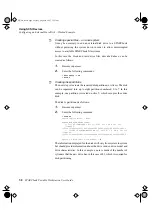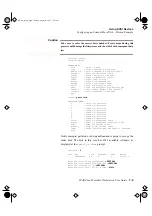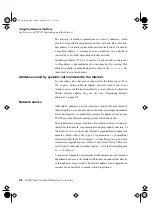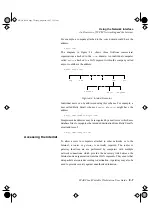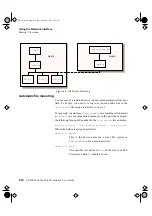
Using the Network Interface
An Overview of TCP/IP Networking and the Internet
8-4
SPARCbook Portable Workstation User Guide
A cable adapter is available to allow you to connect between the 26-pin
mini D-type and a 15-pin D-type AUI cable.
Before you can operate your SPARCbook on a network, it must be
correctly configured, as described in “Configuring Your SPARCbook
for a TCP/IP Network” on page 8-9.
An Overview of TCP/IP Networking and the Internet
All computers connected to an Ethernet network, either directly or via
a telephone line, can potentially access computers all over the world via
the Internet. For this to be possible, every computer needs a unique
identity so that data and messages can be sent and received anywhere in
the world.
Although an in-depth study of networking is beyond the scope of this
manual, this section provide a useful overview of how the Internet uses
a system of network domains and internet protocol (IP) addresses to
make data communications possible over the Internet.
Internet addresses
Every device connected to a network must have a unique address and
must know the address of every other machine on the network that it is
going to communicate with. Internet Protocol (IP) addresses are used to
uniquely identify each machine on the Internet throughout the world. IP
address allocation is normally managed by a single person at a
particular site, often called the system administrator, who is responsible
for the reliable operation and security of an organization’s network.
Figure 8-2 Ethernet Cable Adapter
S3UG4_Book Page 4 Friday, August 8, 1997 11:37 am



